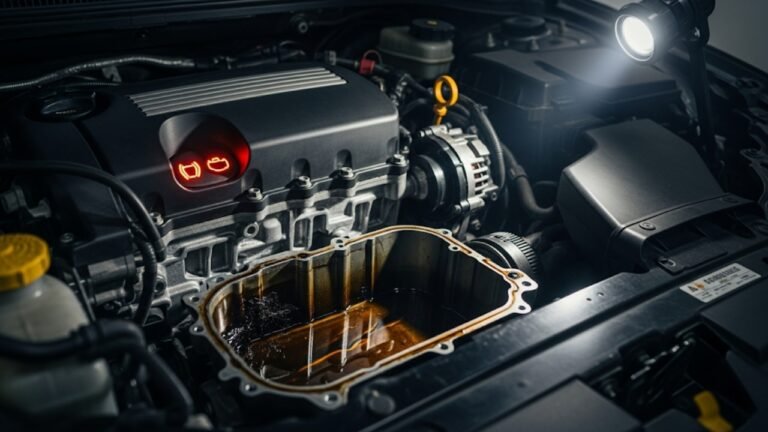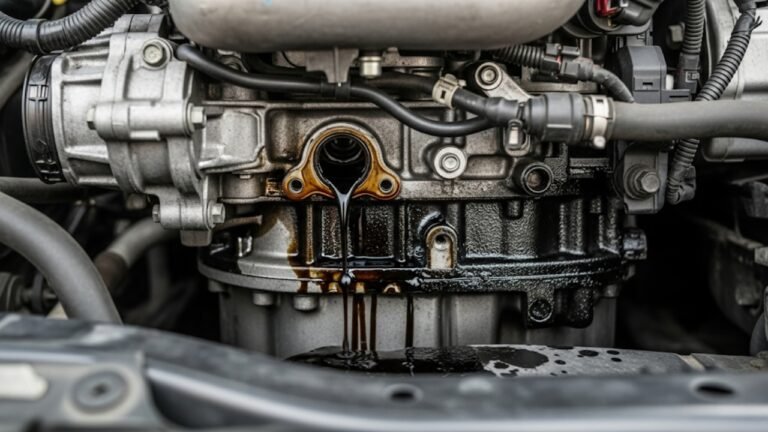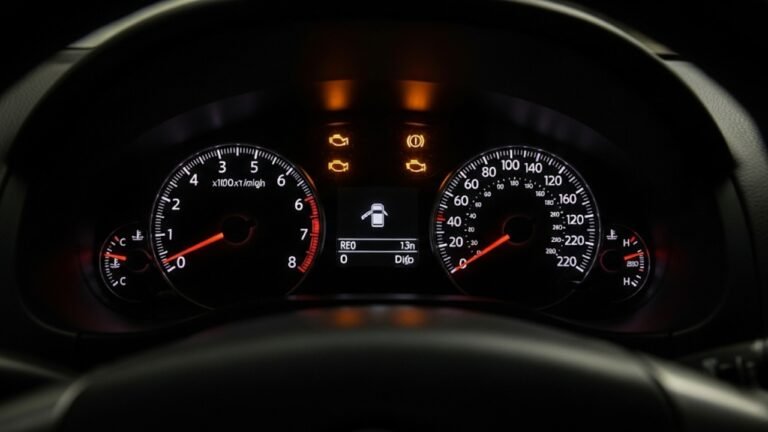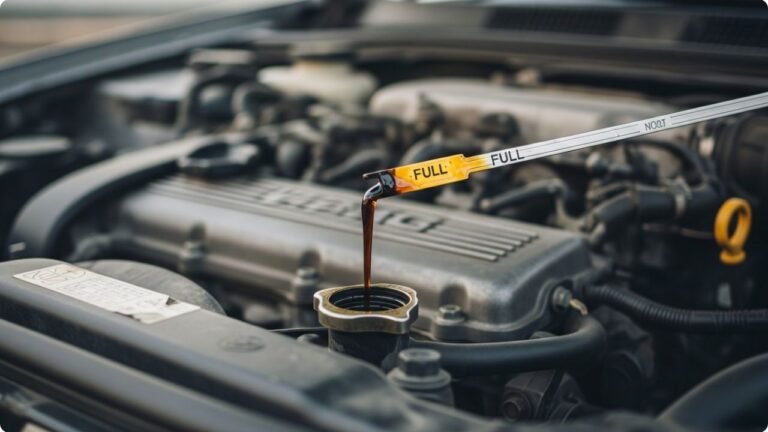How Do You Drain Oil from a Car?

It was a hot Sunday afternoon. My uncle, who I thought knew everything about cars, called me out to help him change his engine oil. I had no clue what we were doing, but I followed him anyway. The smell of warm engine, the glint of oily tools, and the old metal pan we placed under the car are etched into my memory. That’s when I first learned how do you drain oil from a car.
You don’t need to be a mechanic. You just need a bit of courage, the right tools, and a little guidance. And maybe an old shirt you’re okay with staining forever.
Let’s walk through this together like old friends — no jargon, no stress — just clean steps to help you get the job done right.
In This Article
- 1 What You Need Before You Begin: Tools and Safety First
- 2 Step 1: Elevate the Car Safely and Securely
- 3 Step 2: Locate the Drain Plug and Position the Oil Pan
- 4 Step 3: Remove the Old Oil Filter
- 5 Summary of Drain Process Timeline
- 6 Step 4: Plug It Back In and Tighten Up
- 7 Step 5: Install the New Filter with a Personal Touch
- 8 Step 6: Add New Oil and Check Levels
- 9 Step 7: Clean Up the Mess Like a Pro
- 10 Step 8: Dispose of Old Oil the Right Way
- 11 How Do You Know You Did It Right?
- 12 Why This Skill Matters More Than You Think
- 13 Personal Reflection: The Day My Perspective Changed
- 14 Quick Recap in Bullet Form
- 15 Emotional vs Practical Benefits
- 16 Final Thoughts: You’re More Capable Than You Think
What You Need Before You Begin: Tools and Safety First

Here’s what you’ll need:
Essential Tools:
-
Oil filter wrench
-
Socket wrench set
-
Oil drain pan (metal or plastic)
-
Jack and jack stands (or ramps)
-
New engine oil (check your car manual for type and amount)
-
New oil filter
-
Gloves (trust me, it gets messy)
-
Funnel (to refill oil cleanly)
-
Rags or paper towels
Safety Tips to Keep in Mind:
-
Work on a cool engine – hot oil can burn.
-
Use jack stands – never rely on just the jack.
-
Wear gloves – oil isn’t good for skin.
-
Have kitty litter or sawdust nearby – in case of spills.
Take a deep breath. The hardest part is usually starting. Once you do, it flows (literally) from there.
Step 1: Elevate the Car Safely and Securely
Draining oil isn’t something you can do well while the car’s sitting flat. You’ll need room underneath to work.
Use a jack to raise the front of the car and set it down on jack stands. If you’re lucky to have car ramps, even better — they’re stable and beginner-friendly.
Here’s a short checklist:
-
Make sure you’re on a flat surface — never on a slope.
-
Engage the handbrake.
-
Place wheel chocks behind the rear wheels.
-
Double-check the car is stable before crawling underneath.
Remember that day with my uncle? We skipped using wheel chocks. The car rolled an inch, and we both screamed. Thankfully, it stopped, but that moment taught me: don’t take shortcuts with safety.
Step 2: Locate the Drain Plug and Position the Oil Pan
Now the fun begins.
Slide under the car and look for the oil pan, usually near the center of the engine. It’s a flat metal piece with a bolt (drain plug) at one corner.
Place the oil drain pan directly underneath that bolt — but shift it slightly back. When the oil shoots out, it often flows at an angle first.
Unscrew the plug with a socket wrench. Go slow. As it loosens, you’ll feel it getting slippery. The moment the plug is free, quickly pull your hand back and let gravity do the rest.
Hot, thick oil will start pouring out like black coffee. It’s oddly satisfying to watch, and a little emotional too — like your car is letting go of a bad week.
Let it drain completely. Don’t rush this. Good oil changes happen in the wait.
Step 3: Remove the Old Oil Filter
While the oil drains, move to the oil filter. It’s usually a round, can-like object sticking out from the engine side or bottom.
Use your oil filter wrench to loosen it. Be careful — some oil will spill out when you remove it.
Pro tip: place a rag or small tray beneath the filter to catch this extra oil. It’s sneaky.
Now here’s a moment I didn’t expect the first time: when you remove the filter, check the gasket (a rubber ring on the old filter). If it’s stuck to the engine, remove it by hand. Installing a new filter on top of an old gasket causes leaks — learned that the hard way.
Summary of Drain Process Timeline
| Step | Description | Estimated Time |
|---|---|---|
| Jack up car | Secure it with jack stands or ramps | 5 minutes |
| Locate and loosen plug | Oil flows out into pan | 2 minutes |
| Full oil drain | Wait for it to empty completely | 5–10 minutes |
| Remove old filter | Oil may drip; clean surrounding area | 5 minutes |
Total so far: ~20 minutes, and you’re halfway to a healthier engine.
Step 4: Plug It Back In and Tighten Up
Once the oil has completely drained, take a deep breath. You’re doing great.
Grab a clean rag and wipe the area around the drain plug hole. Then reinstall the drain plug and tighten it securely with the socket wrench — not too tight, just snug. Over-tightening can strip the threads or crack the pan. Be gentle but firm.
Double-check: no drips, plug secure, hands clean. This is when the oil starts whispering back: “Thanks, friend.”
Step 5: Install the New Filter with a Personal Touch
Before installing your new filter, do something smart and almost ceremonial — dip a finger in the new oil and lubricate the rubber gasket on the filter.
Why? This helps it seat properly and makes it easier to remove next time.
Now, screw the filter on by hand. Tighten it till it’s snug — and then just a little more. Again, no wrenches here. Filters are designed to seal tight without brute force.
When my cousin tried using a wrench to “make sure it’s tight,” he ended up cracking the filter housing. Lesson? Trust the design. Trust your hands.
Step 6: Add New Oil and Check Levels
We’re almost done. Pop the hood, find the oil cap, and remove it. Place your funnel, then slowly pour in the new oil.
Check your car’s manual for the exact amount — most cars take between 4 to 5 quarts.
Once filled, put the cap back on, and start the engine for 30–60 seconds. Let the new oil circulate. This also helps fill the new oil filter.
Then turn off the engine, wait 2 minutes, and pull out the dipstick. Wipe it clean, reinsert it, and pull it out again to check the level.
Top up if needed until it hits that full mark.
There’s something deeply satisfying about seeing golden oil on a clean dipstick. It feels like you’ve done something meaningful — because you have.
Step 7: Clean Up the Mess Like a Pro
Now that your car’s belly is full of fresh oil, it’s time to clean up. Don’t just toss everything into the garage corner — this step matters more than most people think.
Start by checking for leaks under the oil plug and filter. Look for drips or wetness around the edges. If you see any, grab your wrench and give it a gentle tighten. If everything’s dry, you’re golden.
Next, wipe down:
-
Your tools (especially oil-covered wrenches)
-
The oil funnel (or toss a disposable one)
-
The engine area, in case any oil spilled
If oil splashed on your driveway or garage floor, sprinkle kitty litter, baking soda, or sawdust. Let it sit, then sweep it up. This step saved my mom’s favorite concrete tiles once. Trust me, stains are harder to explain than to prevent.
Don’t forget to record the date and mileage — this helps you track your next oil change like a real pro.
Step 8: Dispose of Old Oil the Right Way
This part is super important. Never pour oil down the drain or into the soil. Used engine oil is toxic and harmful to water, animals, and the environment.
Here’s how to dispose of it:
-
Pour the used oil from the drain pan into a sealed container (like the original oil bottle)
-
Drop it off at your local auto parts store, service station, or municipal waste facility
-
Most places recycle oil for free — it’s a win for the planet
As for the old oil filter, place it in a plastic bag, and take it to the same location.
You’ll feel a quiet pride walking into a recycling center with your little bottle of dark oil. You’re not just a car owner — you’re a responsible one.
How Do You Know You Did It Right?
Even if it’s your first time learning how do you drain oil from a car, you’ll know you did a great job if:
-
The oil level on the dipstick is at the full mark
-
No warning lights are showing on your dash
-
There’s no oil leaking under the car overnight
-
The engine runs smoother and a little quieter
And maybe the biggest sign? That rush of satisfaction when you turn the key, and the engine purrs like a cat after a good nap.
That’s your moment. Own it.
Why This Skill Matters More Than You Think
Changing your own oil isn’t just a maintenance task — it’s a small act of independence. You’re learning how do you drain oil from a car, but in the process, you’re:
-
Saving money (seriously, shops charge triple)
-
Understanding your vehicle better
-
Building confidence that spills over into other DIY skills
-
Respecting the machine that takes you places
One of my friends recently said, “I don’t even drive much, but I still learned how to change my oil. It just felt like something I should know.”
He was right. There’s something deeply human about getting under a car, hands dirty, doing something real.
Personal Reflection: The Day My Perspective Changed
I remember the second time I changed oil — this time, alone. I was nervous. I double-checked every step. Wore my dad’s old shirt. My hands shook a little when I loosened the drain plug. But by the end, when I wiped the dipstick clean and saw fresh oil, I laughed.
Not because it was funny, but because I’d done something I didn’t think I could.
I called my uncle right after and said, “You created a monster. I might start changing oil for all my neighbors.”
He laughed, and so did I.
Quick Recap in Bullet Form
-
Lift the car safely using a jack and stands
-
Drain the old oil by removing the drain plug
-
Remove and replace the oil filter
-
Reinstall the drain plug snugly
-
Add fresh oil using a funnel
-
Check the oil level on the dipstick
-
Run the engine briefly to circulate oil
-
Check for leaks, then clean up
-
Dispose of the used oil responsibly
-
Log your mileage and pat yourself on the back
Simple. Empowering. Useful.
Emotional vs Practical Benefits
| Emotional Benefit | Practical Outcome |
|---|---|
| Feeling of independence | Save $30–$100 per oil change |
| Connection to your vehicle | Notice issues early (leaks, smells, etc.) |
| Pride and satisfaction | Increase your car’s lifespan |
| Learning and growing | Improve confidence in mechanical tasks |
| Responsibility and care | Reduce environmental impact |
Final Thoughts: You’re More Capable Than You Think
If you’ve made it this far, you’ve done more than just read how how do you drain oil from a car — you’ve lived it, mentally. And if you’re already under your car reading this on your phone, then friend, you’re a legend.
We live in a world of shortcuts — apps for food, rides, answers. But taking time to learn something hands-on like this? It grounds you. It connects you to a piece of machinery that quietly supports your life every day.
Next time someone says, “You know how to change oil?” smile and say, “Yeah. It’s not that hard.”
Because now, you do.






